Introduction
Having a rock-solid sense of rhythm is essential for all guitar players.
After all, you could be playing the right notes, but if they are played too late, or too early, they will actually sound wrong.
In most popular guitar songs, at least 80% of the guitar parts are rhythm guitar.
The coolest guitar solos often have strong rhythmic hooks. This helps to make them memorable.
So, having great rhythm chops is essential for good rhythm and lead guitar playing.
But let’s face it. The guitar has many technical demands and it’s very easy to get caught up with them.
This usually means at a certain point, rhythm guitar gets neglected.
In this series of tutorials, we will cover the absolute basics of playing rhythm guitar.
As you learn these basics, you will improve your sense and understanding of rhythm.
So let’s get stated…
Basic Note Durations
The first note duration we will look at is the whole note.
In 4/4 time (pronounced four-four time), the whole note receives four beats or counts.
The half note is sustained for half of the duration of a whole note.
So the half note is held for two beats in 4/4 time.
Rhythm Guitar
To make rhythm guitar parts easier to read, rhythm notation is sometimes used.
In rhythm notation you will see the rhythm, but not the individual notes.
Instead you will see a chord diagram that shows you which notes are to be played.
Here is how we notate whole notes and half notes with rhythm notation.
So instead of writing a rhythm guitar part like this:
Rhythm notation is sometimes used instead:
In part of 2 of Playing Rhythm Guitar Basics, we will learn the basics of how to use a metronome and start to apply whole and half notes to the guitar. The great thing is the more you learn rhythm the more you love playing guitar.
Recommended Resources
How would you feel if you discovered that learning to play the guitar is easier than you think?

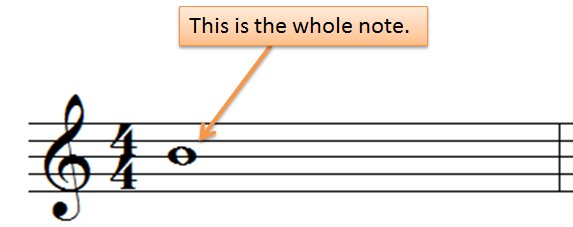

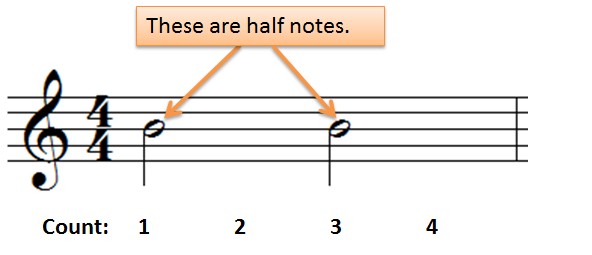
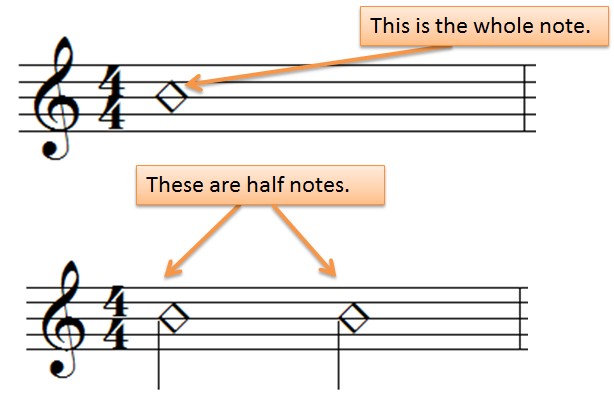

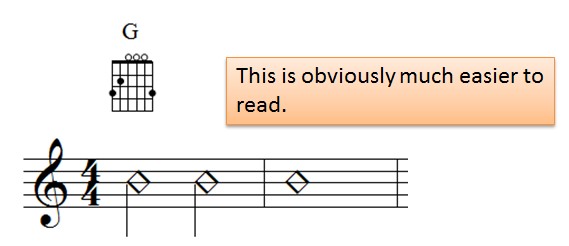




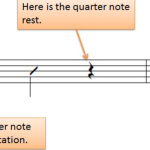
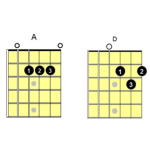
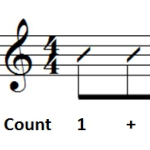
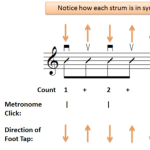
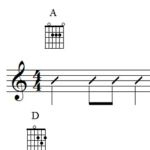
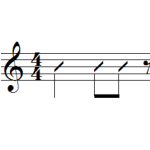
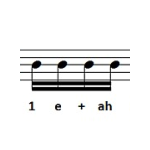


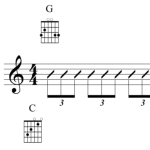
Pingback: Top 5 Overlooked Ways to Improve Your Guitar Playing Part 2 | Guitar Accelerator Blog: Play Guitar - Electric and Acoustic Guitar Lessons